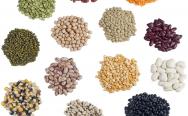Heirloom, Hybrid, and GMO Seeds
 In an effort to clear up any seeds of confusion I am dedicating this column to distinguishing the three distinct “flavors” of seeds: heirlooms, hybrids and GMO’s. Heirloom seeds are left just as Mother Nature intended, while the hybrids and GMO’s (genetically modified organisms) involve some level of human intervention.
In an effort to clear up any seeds of confusion I am dedicating this column to distinguishing the three distinct “flavors” of seeds: heirlooms, hybrids and GMO’s. Heirloom seeds are left just as Mother Nature intended, while the hybrids and GMO’s (genetically modified organisms) involve some level of human intervention.
Heirloom or open pollinated seeds as they are sometimes called, are seeds that have been passed from generation to generation and have stayed true to their ancestral roots by consistently producing the same offspring. This results in plants that genetically are hundreds, or thousands of years old, each developing a resistance to the diseases and pests with which it evolved. When this type of seed is planted and allowed to grow and go to seed again, it will always produce the same plant.
Seed banks serve a vital role in the preservation of the genetic diversity embodied in the heirloom species. Organizations such as The Southern Seed Legacy, Seed Savers International and our own Native Seed Search also have created methods to work with indigenous peoples to preserve such seeds. Of particular interest to me is the way Cornell University in Geneva, New York maintains an incredibly diverse collection of apple and grape plants, boasting over 2,500 apple cultivars and 1,300 grape cultivars.
Hybrid seeds have their own magic. I find that most people are familiar with the term hybrid, which is similar to the process that occurs in nature called natural selection. The process is simple: plant A cross-pollinates with plant B creating plant C. In essence this is how plants and animals slowly evolve. Here is where it gets interesting — about 150 years ago a gentleman named Gregor Mendel discovered that different pea plants (Pisum sativum) carried different traits and that by selectively breeding these plants he could bring out, or suppress, these different traits. The value in this method is that the “positive” traits in a plant or animal can be brought out, while the “negative” traits can be suppressed.
So now onto real life…a farmer has a really sweet watermelon (A) but it has a lot of seeds, and watermelon B has a great shelf life. By selectively breeding these two plants the farmer finds that the resulting watermelon magically doesn’t have seeds, and he gets a sweet fruit with a long shelf life. The unfortunate part of this process is that hybridized plants often make seeds that are not viable for future generations. So saving seeds is somewhat futile, and of course impossible with “seedless watermelons.”
I get a lot of questions from people that have concerns about GMO’s. Currently these seeds are only available to farmers and as of this year are not available at the nursery or in live plants that you can buy. For a great primer on this topic, see the book Genetically Engineered Food: Changing the Nature of Nature, by Martin Teitel & Kimberly Wilson.
Another term you may have seen applied to seeds is Organic. Simply put, organic seeds are those that have been grown in a manner that is consistent with the U.S. Department of Agricultures Organic Standards. There are organically grown heirloom and hybrid seeds. However, under the current organic guidelines you will not see organically grown GMO seeds because by definition they are excluded.
So carefully select and sow your seeds and soon your imagination’s dream garden will be a reality.








Each seed will make on plant. Not all seeds grow though, so plant more seeds than you need. When you plant your seeds, foollw the directions on the package. It will tell you how much dirt to put on top, how far to space each plant, and how long it will take for the seed to start growing. Water your plants whenever the soil feels dry. You don’t want to over-water them so just make sure the soil is always damp.The best planters to start seeds are small styrofoam cups. Poke a little hole in the bottom to let the extra water out. Put that cup inside another one, without a hole, to catch th ewater so it doesn’t make a mess. Good luck on your planting and on your project!